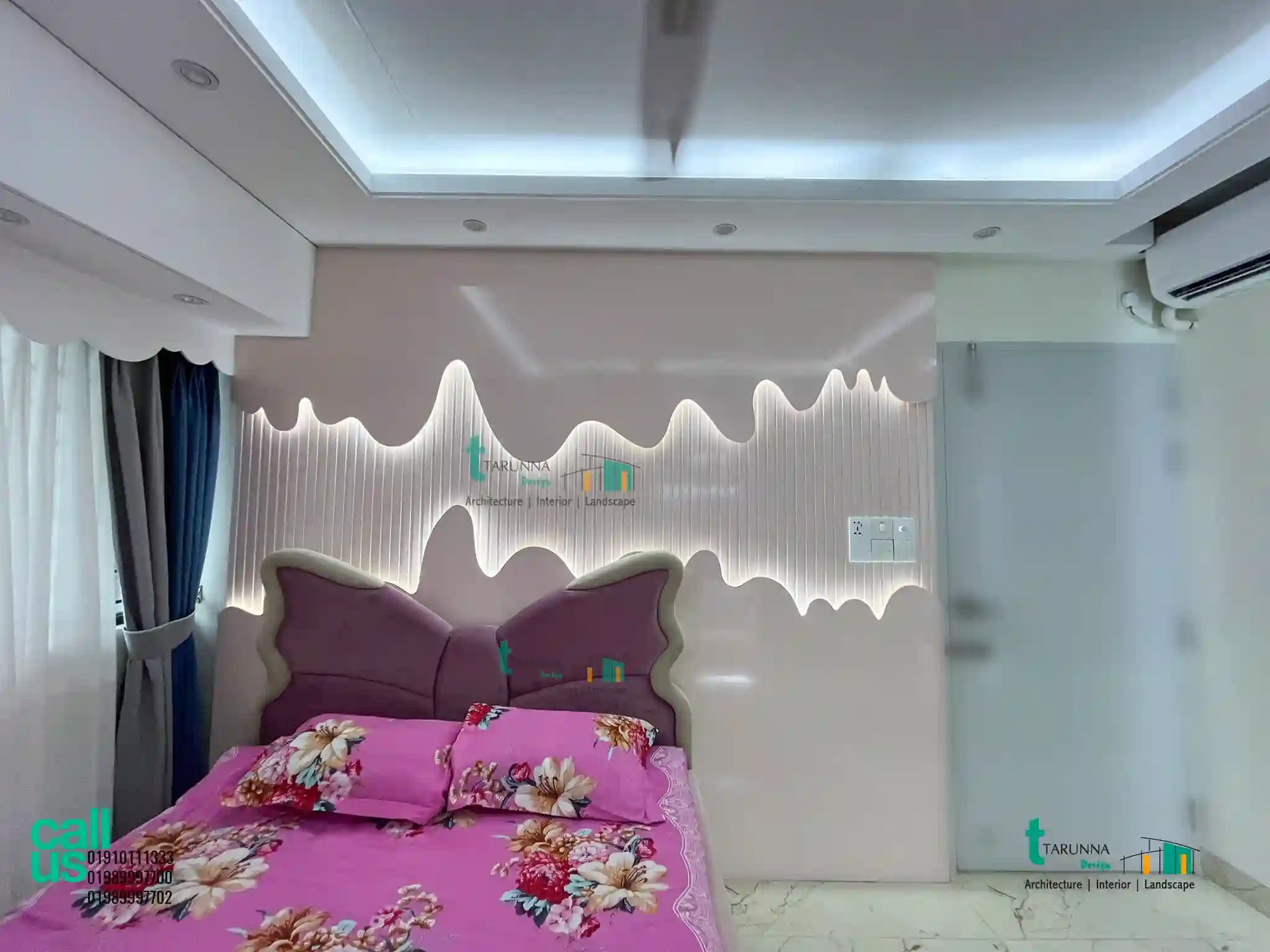 In interior design, the role of a child’s room extends far beyond aesthetics. It’s a space that can significantly influence a child’s development, from emotional well-being to cognitive growth and physical activity. A thoughtfully designed child’s room not only provides comfort and safety but also serves as a nurturing environment that supports various aspects of their development. In this article, we will explore how the right interior design choices can create a room that aids in your child’s growth and development.
In interior design, the role of a child’s room extends far beyond aesthetics. It’s a space that can significantly influence a child’s development, from emotional well-being to cognitive growth and physical activity. A thoughtfully designed child’s room not only provides comfort and safety but also serves as a nurturing environment that supports various aspects of their development. In this article, we will explore how the right interior design choices can create a room that aids in your child’s growth and development.
Designing for Emotional Comfort
One of the primary considerations in designing a child’s room is creating a space that provides emotional comfort. The room should evoke a sense of security and belonging, making it a personal haven for the child. To achieve this, consider the following design elements:
Color Schemes
The choice of color in a child’s room can have a profound impact on their mood and emotional state. Soft, soothing colors like pastel blues, greens, and pinks can create a calming atmosphere, perfect for relaxation and sleep. On the other hand, incorporating brighter colors like yellows and oranges can stimulate energy and creativity. Balance is key—using a combination of these tones can help in creating a room that is both lively and restful.
Lighting
Natural light plays a significant role in enhancing a child’s mood and energy levels. Ensure the room has plenty of natural light during the day by using sheer curtains that allow sunlight to filter through. For evenings, opt for soft, warm lighting that creates a cozy and inviting atmosphere. Dimmable lights can also be a great addition, allowing the light levels to be adjusted based on the time of day or activity.
Personalization
Personalizing the room with elements that reflect the child’s interests and personality can make the space feel uniquely theirs. This could be through wall art, bedding, or even a gallery wall where the child can display their artwork. Personalization not only makes the room more engaging for the child but also boosts their self-esteem and sense of identity.
Cognitive Development Through Thoughtful Design
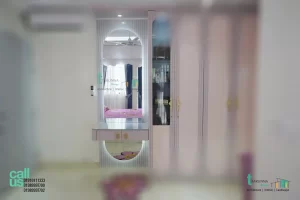 The layout and design of a child’s room can directly influence their cognitive development. A well-organized space that encourages learning and exploration is key to nurturing a curious and active mind.
The layout and design of a child’s room can directly influence their cognitive development. A well-organized space that encourages learning and exploration is key to nurturing a curious and active mind.
Functional Layout
The room’s layout should facilitate different activities, such as studying, playing, and sleeping. Creating distinct zones for each activity helps in organizing the space efficiently and allows the child to focus better on the task at hand. For instance, a cozy reading nook with a comfortable chair and good lighting can encourage a love for reading, while a designated play area with ample space can stimulate imaginative play.
Educational Decor
Incorporating educational elements into the room’s decor can subtly enhance the child’s learning experience. Consider wall decals or murals that feature maps, alphabets, or numbers, which can serve as constant learning tools. Additionally, placing bookshelves at an accessible height encourages children to explore books independently, fostering early literacy skills.
Interactive Elements
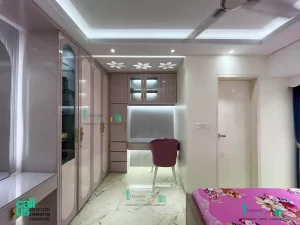 Interactive design elements such as chalkboard walls, magnetic boards, or even a small art station can stimulate creativity and critical thinking. These features allow children to express themselves freely and develop problem-solving skills as they engage in different activities.
Interactive design elements such as chalkboard walls, magnetic boards, or even a small art station can stimulate creativity and critical thinking. These features allow children to express themselves freely and develop problem-solving skills as they engage in different activities.
Supporting Physical Development
A child’s room should also promote physical development by providing space and opportunities for active play. This not only helps in developing motor skills but also contributes to overall physical health.
Safe Play Areas
Designing a safe and accessible play area within the room encourages children to engage in physical activities. For younger children, soft play mats and padded corners can prevent injuries during active play. Older children might enjoy more dynamic elements like an indoor swing, a small climbing wall, or a space for practicing dance or yoga.
Ergonomic Furniture
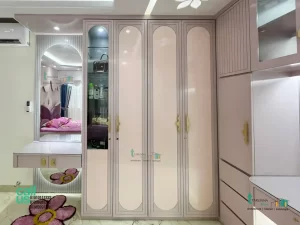 As children grow, their needs change, and so should their furniture. Opt for ergonomic furniture that supports proper posture and can be adjusted as the child grows. This is particularly important for study areas where the child will spend time reading or doing homework. A well-designed desk and chair can prevent discomfort and support healthy physical development.
As children grow, their needs change, and so should their furniture. Opt for ergonomic furniture that supports proper posture and can be adjusted as the child grows. This is particularly important for study areas where the child will spend time reading or doing homework. A well-designed desk and chair can prevent discomfort and support healthy physical development.
Storage Solutions for Organization
A well-organized room can contribute to a child’s sense of responsibility and independence. Incorporate ample storage solutions, such as built-in cabinets, open shelves, and labeled bins, to keep toys, books, and clothes neatly arranged. An organized space not only reduces clutter but also makes it easier for the child to find and put away their belongings, fostering organizational skills.
Aesthetic Balance and Development
Balancing aesthetics with functionality is crucial in a child’s room. While the room should be visually appealing, every design choice should also serve a purpose that supports the child’s growth.
Minimalism Meets Playfulness
A minimalist approach with playful accents can create a room that is both calming and stimulating. Choose simple, clean-lined furniture and neutral tones as a base, then add pops of color and playful decor elements to make the room feel lively and engaging. This balance ensures that the room remains timeless and can easily adapt to the child’s changing tastes and needs.
Incorporating Nature
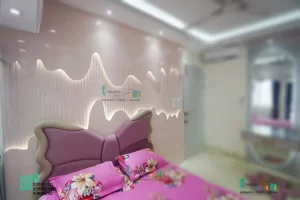 Bringing elements of nature into a child’s room can have a soothing effect and promote a connection with the outdoors. Consider using natural materials like wood and cotton in the furniture and decor. Adding plants or nature-inspired wall art can also create a refreshing and calming environment.
Bringing elements of nature into a child’s room can have a soothing effect and promote a connection with the outdoors. Consider using natural materials like wood and cotton in the furniture and decor. Adding plants or nature-inspired wall art can also create a refreshing and calming environment.
Thematic Design
A themed room can be a wonderful way to spark a child’s imagination and make their space feel magical. Whether it’s a space-themed room with stars and planets or a jungle theme with animal prints and green accents, a theme can make the room more engaging. However, it’s important to keep the theme flexible and not overly specific so that the room can evolve with the child’s interests.
Conclusion
A well-designed child’s room is more than just a beautiful space—it’s a powerful tool in supporting a child’s development. By carefully considering elements like color schemes, functional layouts, and interactive features, you can create a room that nurtures emotional, cognitive, and physical growth. Remember, the best designs are those that balance aesthetics with functionality, creating a space where a child can thrive, explore, and grow.
